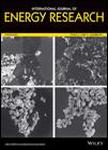版权所有:内蒙古大学图书馆 技术提供:维普资讯• 智图
内蒙古自治区呼和浩特市赛罕区大学西街235号 邮编: 010021

作者机构:Univ Nat Ressources & Appl Life Sci Doctoral Sch Sustainable Dev A-1190 Vienna Austria Int Inst Appl Syst Anal A-2361 Laxenburg Austria Malardalen Univ SE-72123 Vasteras Sweden Univ Nat Ressources & Appl Life Sci Inst Sustainable Econ Dev A-1180 Vienna Austria
出 版 物:《INTERNATIONAL JOURNAL OF ENERGY RESEARCH》 (国际能源研究杂志)
年 卷 期:2010年第34卷第11期
页 面:970-985页
核心收录:
学科分类:0820[工学-石油与天然气工程] 08[工学] 0807[工学-动力工程及工程热物理] 0827[工学-核科学与技术]
基 金:Austrian Research Program 'provision' Federal Ministry of Agriculture, Forestry, Environment and Water Management Federal States Vienna, Lower Austria and Styria
主 题:combined heat and power district heating bioenergy biomass mixed integer programming Monte-Carlo simulation
摘 要:Combined heat and power (CHP) plants fired by forest wood can significantly contribute to attaining the target of increasing the share of renewable energy production. However, the spatial distribution of biomass supply and of heat demand limits the potentials of CHP production. This article assesses CHP potentials using a mixed integer programming model that optimizes locations of bioenergy plants. Investment costs of district heating infrastructure are modeled as a function of heat demand densities, which can differ substantially. Gasification of biomass in a combined cycle process is assumed as production technology. Some model parameters have a broad range according to a literature review. Monte-Carlo simulations have therefore been performed to account for model parameter uncertainty in our analysis. The model is applied to assess CHP potentials in Austria. Optimal locations of plants are clustered around big cities in the east of the country. At current power prices, biomass-based CHP production allows producing around 3% of the total energy demand in Austria. Yet, the heat utilization decreases when CHP production increases due to limited heat demand that is suitable for district heating. Production potentials are most sensitive to biomass costs and power prices. Copyright (C) 2009 John Wiley & Sons, Ltd.